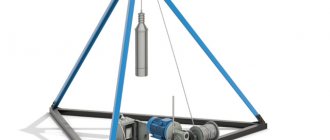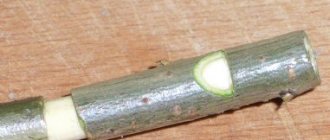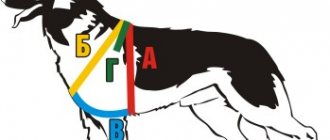Description of design
The Great Russian hive is a classic in beekeeping. It looks a bit like a hollow tree. Bees like the design because it resembles a natural home. It is also convenient for the beekeeper to take honey from the nest.
Advice!
Bees in a Great Russian hive can survive without humans for a long time. Although, of course, constant supervision is desirable.
The Great Russian hive is often made from coniferous wood. Houses made to order from stores are sometimes delivered unpainted. In other cases, the color is specified separately.
Many beekeepers make Great Russian hives themselves. The design is simple and reliable. Features of the house include the following:
- Consists of several buildings.
- Reinforced nesting frames. There are special ridges on the side bars.
- There is space between the outer and inner housing. You can use it to dry 2-4 frames.
The Great Russian hive was invented by Vladimir Evgenievich Baran. Before that, he studied other people's experiences. The new design included elements of other types:
- Decks. From here the natural shape of the house and its large volume were borrowed. This is the basis of the design.
- Vitvitsky hive. Velikorussky resembles it in appearance (dome, “bell tower”), good tightness.
- Ulya Prokopovich. From here Baran took the structure of the nest, some dimensions. Dividing boards with cuts also became a model.
- Hive Dadan. The design of the upper buildings.
How to make it yourself
To build a Great Russian hive you will definitely need a drawing. Next, prepare all the necessary materials and tools and get to work.
Materials and tools for manufacturing
First of all, find and buy suitable materials:
- Coniferous wood. The boards are dry, 2.5–3.5 cm thick.
- Galvanized iron. Needed to cover the roof.
- Nest frames. You can take ready-made ones. Size - 30 × 60 cm.
- Stainless steel mesh.
- Polyurethane.
- Polystyrene.
- Styrofoam.
Tools and tools - standard for a home handyman:
- hammer;
- saw;
- drill with drills;
- pliers;
- ruler, tape measure;
- square;
- wood glue;
- wire;
- self-tapping screws;
- chisel;
- awl, etc.
Drawings and dimensions
Next, a detailed drawing is performed. The more detailed it is, the easier it is to work later.
Advice!
It is not necessary to complete the drawing according to all the rules. The main thing is to make it clear to yourself. Sometimes they mark what material is made from.
The Great Russian hive has a special configuration and structure. This is what they take as a starting point when drawing up a drawing:
- Inner housing (nested). Thickness - 2.5 cm. Designed for 8 frames.
- External body. Wall thickness - 3.5 cm. Place on the inner one.
- Two or more Dadan (honey) buildings. Each one holds 12 frames. Installed from above.
- Bottom. It features a wooden frame with a stainless steel mesh in the center. After fumigation, the bee shakes off the mites from itself and others. Plus the mesh helps with ventilation. Cover with a screen shield only in cold weather: from late autumn to spring.
- Roof. Flat standard. Galvanized. Unlike most other hives, there are no holes for ventilation. Everything is sealed.
Hive equipment inside
It is important to properly equip the Great Russian hive inside. The normal life of bees and the success of the whole business depend on this. Inside the Great Russian hive they place:
- Magazines for 12 frames.
- Liner.
- Magazine frames are 43.5 × 14.5 cm. Sometimes other formats (main ones) are used, for example, 435 × 300.
- Ceiling.
- Nest frames. Each size is 30 × 60 cm.
- Screen shield. This is a special board. Used during the wintering period of bee colonies.
- As a rule, the Great Russian hive is supplemented with a Prokopovich separator. Needed to break the nest. Represents a board with cuts. It covers the nesting part of the hive. The uterus does not go through the cut, although the size allows it. The point is the total thickness of the nesting frame and the Prokopovich separator: about 4 cm. Such a gap instinctively pushes the uterus away. Plus the temperature above the nest is slightly lower. Worker bees climb through the divider up to the frames with honey.
Useful DIY beekeeping equipment
If you really want to, you can do almost everything yourself to maintain your apiary.
- Among the main devices that make the beekeeper’s work easier, it is worth considering the following:
- separator for frames - helps to maintain frames in one position, leaving a certain distance between them, which reduces the risk of injury to insects and simplifies disassembling the structure if necessary;
- box stools - make life much easier for the beekeeper, serving as both a box for storing the equipment needed in the apiary and a chair;
- Box-type feeders are a convenient design, divided into several parts for filling with different types of food.
Frame divider
You can use metal strips as frame dividers. Their width should correspond to the width of the bars of the frames themselves; the length can be arbitrary. To hold the frame in one position you will need 4 strips of metal. For reliable fixation, one edge of each strip needs to be bent: this can be done quite simply by clamping the plate between the fixing bars and giving the end the required shape.
Did you know? A bee is unable to sting when its belly is filled with nectar.
You can use 2 dividers per frame. In this case, the length of the plate should exceed the length of the frame by 3 cm, the width should be similar to the width of the frame. When using 2 dividers, they are given a U-shape. The plates themselves are fixed, leaving 1.4 cm of length free on each side, and they are given the desired shape with a hammer.
For ease of use, you can attach the dividers to the frames using screws.
Video: Frame divider
Stool-box
The simplest design is a regular stool with a drawer of a suitable size secured under the seat. The bottom of the box and the back wall are made from two pieces of plywood; they are secured with angles and screws. Next, a retractable part is equipped: for this, ball guides are attached to the lower part of the bottom on both sides.
Advantages and disadvantages
Important!
The house, the nest imitates a hollow. The design is assembled according to natural laws. The bees feel comfortable here.
The Great Russian hive has other advantages:
- Suitable and stable internal temperature. It helps, including the Prokopovich separator. Protective air corridors appear.
- Low humidity inside the buildings.
- Air circulates between the lower inlet and the tap holes in the upper housings. Honeycombs are ventilated without harming the nesting ones. The queen and brood are not overcooled. Not all types of hives have this advantage.
- Insects are of little concern. The beekeeper almost never looks into the nesting, lower part of the Great Russian hive.
- It is convenient to take honey, especially from frames 43.5 × 14.5 cm. It is possible even in winter, as Pyotr Prokopovich sometimes did.
- Successful design of nesting frames. Researchers have found that bees make 6–8 honeycombs for reproduction. There are just 8 frames in the nest of a Great Russian hive.
- Quick transition to active work. In some other hives, beekeepers are afraid of hypothermia in the nesting part. Therefore, in the spring they do not use all honey infusions. In the Great Russian hive, the Prokopovich separator protects the nest from hypothermia. This is a kind of diaphragm, a buffer. Therefore, you can install all the upper housings at once. This is usually done in early May. Depends on the climate. The landmark is the appearance of the first drones.
- The Great Russian hive has a “margin of safety” and can survive without a person for quite a long time.
- Bees do not crowd into the nest, so they swarm less. They mostly fly from below, but quickly rise to the honeycombs through cuts and the space between the bodies. If it’s cool at the top, they can go into the nest for a while to warm up.
- Easily disassembled, transported, repaired.
The Great Russian hive also has disadvantages:
- Poorly protected from wind and drafts.
- Tall, multi-storey, which is not always convenient.
beekeeper's homemade products 1
Tweet
Useful homemade beekeepers , these I made myself help well in my work.
Electric knife, it resembles an ordinary beekeeping knife, for unsealing
honeycomb. I made the blade myself. I found a suitable piece of stainless steel 1.5 mm thick
a thin blade works better, bent in the shape of a beekeeping knife, then sawed
fortune in the middle of the blade, not all the way along. Then I sharpened it on sandpaper with two
sides, made it double-edged, shaped it into a blade at the end and that’s it.
You can also convert an ordinary beekeeping knife from stainless steel, I think from steel
It will work too, but it will oxidize from the honey, stainless steel is better.
electric knife
The handle is made of PCB 5 mm thick, holes are drilled (a special drill for stainless steel), rivets are selected, rivets are selected, screws are attached to the ends, plugs are from an ordinary 220 volt power plug. Mating sockets can be used from connectors
or, disassemble the Mercedes and take the wiring from it along with the sockets, which is what I did.
the wires are good, soft, thick, you need a cross-section of about 2 kV, you can use any wires, but they are selected according to the current and so that they are elastic, they will last longer.
The best option is a ready-made transformer, from an old tube TV, it
can be easily disassembled, the secondary winding can be removed, excess wires can be unwinded,
even completely, then our wire is wound onto this coil, it is better to wind it entirely and bring out the long ends so as not to solder later. Otherwise, you will have to make a connection with screws, the soldering may fall off due to the temperature. The heating of the wires with the selected cross-section is minimal, but during long-term work in the summer, a thick wire is needed, which leads to inconvenience in work. The number of turns must be selected individually for your knife, it all depends on the steel, thickness, length. The criterion will be the temperature of the blade, preferably no more than 70 gr S. The wax is already melting, but the honey does not burn and the wires do not melt. I have this transformer, which also serves for electrical heating of hives in the spring.
Therefore, the winding has many turns for a voltage of 12 V, and a tap for powering the knife.
see photo 2.
knife with transformer
You can also make a pedal switch for the network, a button is made that supplies voltage to the transformer, this button will conveniently turn on and off the electric knife, from long-term operation the handle
It gets hot and is inconvenient to work with.
In general, you don’t have to worry and buy the cheapest one here:
https://www.pchelovod.com/url.php?link=YToyOntzOjEwOiJjdXN0b21lcklEIjtzOjU6IjIyNjUyIjtzOjM6InVybCI7czozODoiaHR0cDovL3d3dy5wY2hlbG92b2QuY29tL3Byb2QxMjk0Lmh0bWwiO3 0=
Electric heating of hives is a good thing.
From practice, families when using electric heating in the spring, in their
development was ahead of other families, under equal conditions, by about ten days.
I am an electronics engineer by profession and it won’t be difficult for me to connect to everyone
hive a bunch of electronics with sensors and other attributes like some
advanced beekeepers “Prog”, but I think this is a misfortune.
It's better to deal with bees! Based on the experience of many beekeepers,
and my own as an electronics engineer, I came to the conclusion that
the fewer parts, the better any installation works,
and cheaper to manufacture and operate.
I would like to bring to your attention my own development
heating element for electric heating of the hive that I use.
Heating should be background, not exceed a power of 13 W,
then the bees will be fine.
I turn it on constantly, at the beginning of March until May, when a stable
I turn off the temperature. For production you need nichrome wire, you need
select the resistance and length so that it is at least 50 cm for a power of 13 W and
voltage 12 V. If you don’t know Ohm’s law, open your school physics textbooks,
everything is written there. The second element for the heater is a welding electrode 3 mm and 400 mm long.
The third element, a regular splitter for connecting electrical wires, must be selected so that the diameter where the wires are inserted is at least 3 mm.
You also need to disassemble another Mercedes, where you can pick up the connecting terminals, you can also use the Zhiguli terminals or find some 2-pin connectors.
This is necessary in order to quickly disconnect the hive from the general circuit.
Using such a transformer, you can connect no more than 12 hives to one circuit
better than 10. When connecting 10 hives, the current will be approximately 10 A, the line is drawn
using an ordinary copper stranded network wire of the appropriate cross-section, it is advisable that the hives stand in a row. There should be a socket or mating connector near each place; all hives are connected in parallel.
Let's start assembling the beekeeper's new homemade heating element.
a heating element
We take the electrode, clean the beginning of the electrode from the coating approximately 5 mm from the edge, carefully so that the rest of the coating does not crumble and is preserved until the electrode holder. Then we take a hacksaw for metal and carefully make a cut at the end along the axis with a depth of approximately 2 mm, take a wire from nichrome, horse the wires must be tinned using a soldering iron and a special flux (for soldering nichrome or aluminum)
The end of the electrode in which the cut can be made can also be tinned in advance.
Then insert the tinned end of the wire into the slot and wrap it around
electrode and insert it into the slot again, then squeeze the end with pliers
electrode so that the wire is fixed and does not jump out of the slot,
solder the end to ensure reliable contact.
We clean the second end of the electrode with sandpaper or a file,
insert into the hole of the comb (after having bitten off 2 contacts from it, three are possible)
and clamp it with a screw. We wind the wire on top of the electrode coating
(coating is an electrical insulator) winding pitch, approximately 10 mm,
we wind it until the end of the coating under tension so that the wire does not touch the second end of the electrode, insert it into the second hole of the comb, clamp it with a screw,
everything is ready, we check it with a tester. Then we take fiberglass,
cut a strip 20-30 mm wide and start wrapping
from the soldering point, (having previously sealed the end so as not to get shaggy)
to the comb, where we cut the strip into two and tie it around the electrode,
so that the wire does not press against the electrode and there is no short circuit.
We drill two holes in the bottom symmetrically from opposite sides,
perpendicular to the direction of the frames, select the holes according to the diameter of the tube
the tube will fit from aluminum ski poles, the tube is inserted into the holes
pressed in, the heater is inserted inside, the wires and connector socket are secured
on the side of the bottom housing. The two-core cable has 10 branches each
hive with separate plug that can be easily inserted and removed when moving
hives.
You can also read similar topics: beekeeper's equipment
Rules for keeping bees
Important!
To be successful, you need to constantly monitor the situation in the hives. Bees are more vulnerable in winter. They cannot maintain their temperature, eat a lot, and feed their offspring less well.
In the cold, winter, the work of beekeepers is as follows:
- Check ventilation and humidity in the hives. If necessary, increase air exchange in the winter hut or in bee houses outside. The swarm is more afraid of humidity and temperature changes than frost. In hives for ventilation, you don’t have to insulate the space between the nest and the walls of the outer housing. The air cushion retains heat. The upper housings are removed.
- Check wintering bees once a month. A strong buzzing sound indicates problems. If the bees are restless, it means they are stuffy or lacking food.
- They give food. Each Great Russian hive needs a couple of hundred with beebread. This is an excellent protein food.
- Starting from the end of February and in March, they give a decoction of yarrow, pine needles, and wormwood. This is a therapeutic, preventive feeding. Specialists sometimes prescribe other means and procedures. Beekeepers fight bacteria and disinfect equipment.
The condition of the bees is also monitored during the rest of the year. Particular attention is needed when offspring appear and the temperature inside the hives rises to +34 °C. At this moment, the bee family is entitled to an “allowance” - a sugar cake with pollen. It is placed on frames under the canvas.
Prepare the flatbread like this:
- Take 1 kg of mature honey.
- Heat up to +40 °C.
- Put 4 kg of powdered sugar there.
- Knead the dough.
- Pour in warm water. For 10 kg of honey and powder you need 1 liter.
Events
View Comments
Typically, hair brushes are used to remove bees from frames. When swept away, the bees' legs and wings break. They get excited, become embittered, and sting everyone around them.
With the systematic use of brushes, the bees become aggressive and do not even allow them to pass by the hive.
To avoid these troubles when selecting frames, I use air. I blow the bees off the frames using a foot pump for inflating rubber boats.
I proceed as follows. Having opened the hive, I make two or three sharp pumps with my foot, directing the pump hose into the inter-frame space of the removed frame. The bees fly down the hive, some of them remain on the frame.
Having taken out the frame, I place it at an angle in the middle of the open hive and, pressing the pump pedal another 2-3 times, I blow off the bees from one side of the comb, and then from the other, after which I put the frame in a portable box. So I remove the bees one by one from the frames of the entire magazine extension. This way it is possible to avoid injury to the bees. They do not get excited and behave peacefully. You can even work without a face mesh.
The pump is sold in stores selling fishing goods. But you can make it yourself. To do this, you will need two oval plywood plates 10 mm thick, a window hinge, a spring from an old sofa or bed, a piece of rubberized fabric and a hose (Fig. 1).
If rubberized fabric is difficult to obtain, you can cut segment 1 from an old truck inner tube.
Two plates are cut out of plywood, which should fit tightly into the edge of the car camera segment. Two holes with a diameter of 15–20 mm are made in the upper plate 4
A hose 3 , and a piece of soft rubber is glued or nailed from the inside to the other hole, which serves as a check valve for air intake. Having fastened the plates with a window hinge 7 , they are tightly inserted into the chamber segment, covered with nails around the perimeter using a strip of tin, not forgetting to put a spring 5 .
I have been using this pump for many years, which allows me to avoid injury to bees.
• • •
In my apiary for many years I have been using wasp traps made like a single-thread fishing rod. To make it, I take an ordinary liter glass jar or a plastic 1.5–2 liter transparent bottle, which should be cut to the height of a liter jar. I insert the cut-off part from a plastic bottle into a glass jar with the neck down, and cut the edge level or slightly above the neck of the glass jar (Fig. 2). I pour sour and slightly sweetened bread kvass or sour compote into the jar to a height of 1.5–2 cm. This is the best trap for wasps, blow flies and wax moths. Hornets also get into it. Bees are not interested in it. I place the trap directly on the hive.
M.M.LOMOVSKY
Moscow region
Share with friends
Beekeepers' Tips
When working with Great Russian hives, the following advice from experienced beekeepers will help:
- Before expanding a bee colony, preparation is needed. They check inventory, add frames, etc.
- By winter, the swarms become more crowded. The weak unite with the strong or among themselves. In Great Russian hives this problem occurs less frequently.
- Do not forget about protein feeding in winter. If the bees don't have enough food, the brood will be weak.
- It is taken into account that families with a young queen tolerate cold weather more easily.
- A good beekeeper establishes “feedback” with the bees and understands them. Let’s say that after a control blow to the wall, the “choir” buzzes discordantly and unharmoniously. This means the bees eat little. Need to add food. And if the bees are lethargic and buzz little, perhaps something has happened to the queen.
- We need NZ - frames with beebread and honey. Only store sealed.
A good beekeeper usually resembles his charges. He works constantly and always gets honey.








